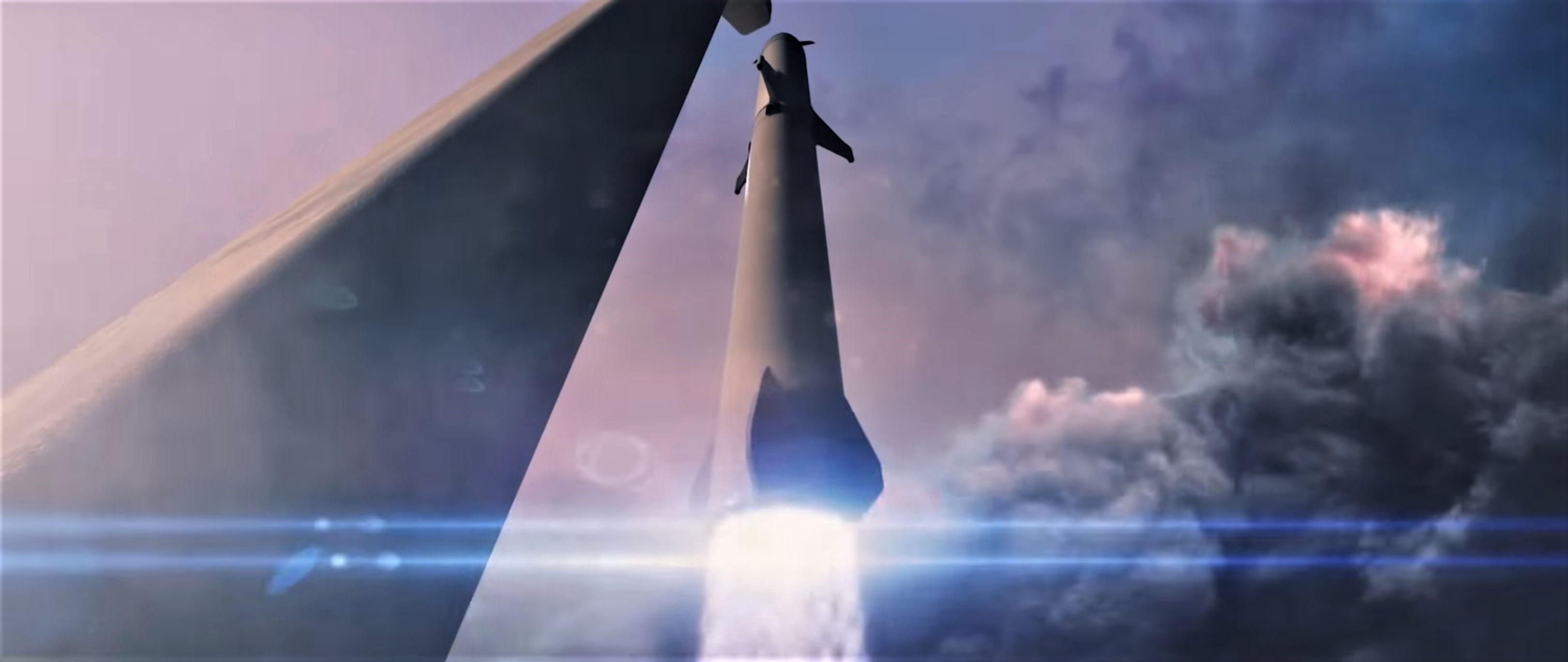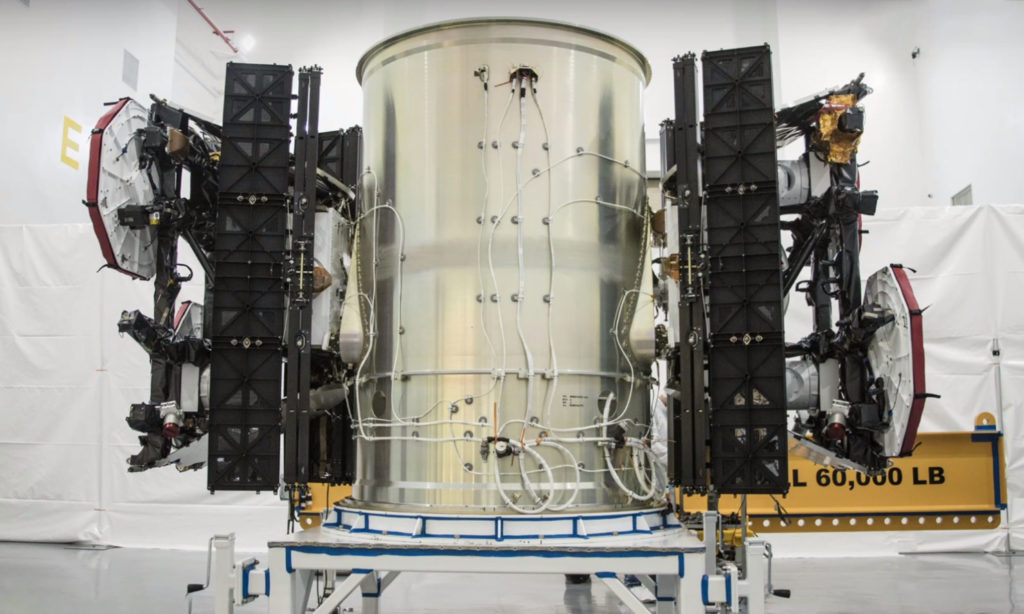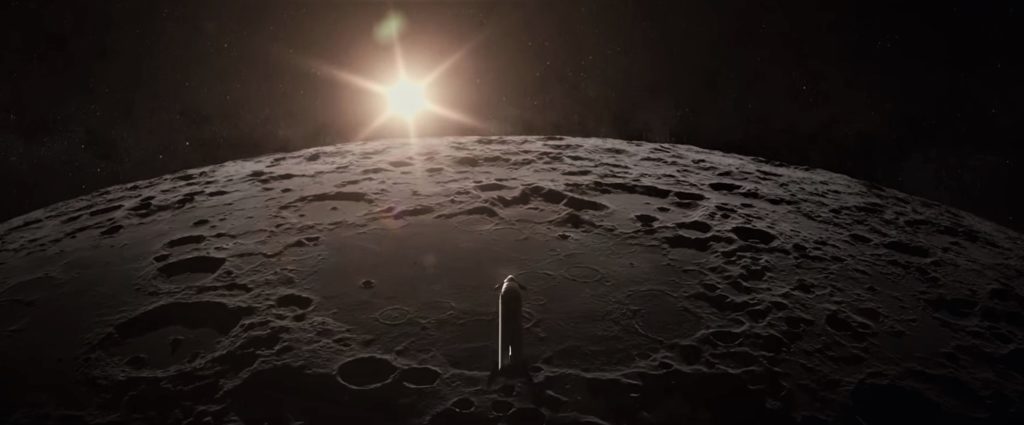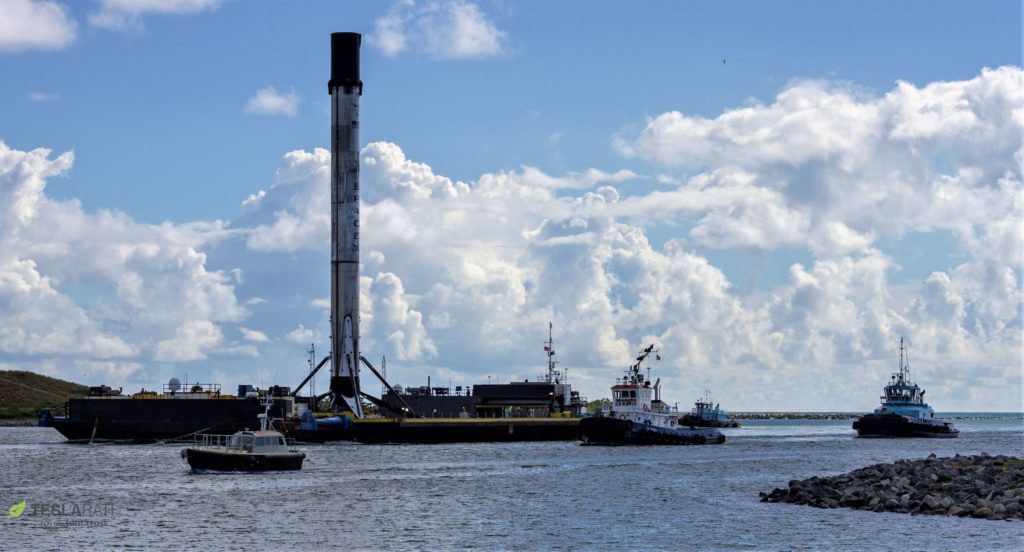

News
SpaceX to livestream private BFR Moon mission “in high-def VR” with Starlink satellites
Following a detailed update to SpaceX’s BFR plans and the first privately contracted mission to the Moon, CEO Elon Musk has tweeted that the company intends to stream the entire six-day journey in “high def VR”, a plan that would demand unprecedented communications capabilities between the Moon and the Earth.
Musk further confirmed that “Starlink should be active by [2023]”, suggesting – at a minimum – that the SpaceX-built and SpaceX-launched internet satellite constellation will have reached what is known as ‘initial operating capability’, pegged for Starlink at roughly 800 satellites launched.
Moon mission will be livestreamed in high def VR, so it’ll feel like you’re there in real-time minus a few seconds for speed of light
— Elon Musk (@elonmusk) September 18, 2018
No small task
To give some rough context for what Musk wants, streaming in high-enough quality for a good virtual reality (VR) experience on a deep space voyage around the Moon will demand a sea of bandwidth that’s difficult to find even on the surface of Earth, let alone in space. A 2017 estimate pegged the bandwidth requirements for 4K VR streaming around 300 megabits per second (Mbps), while a solution more fitting for five years of iterative improvement between now and 2023 might demand almost a magnitude greater bandwidth (~3000+ Mbps).
For context, the average American internet connection hovers around 15-20 Mbps while the average 4K YouTube video takes about 25 Mbps to stream, meaning that BFR’s communications link between the ~390,000 km (240,000 mi) Earth-Moon gap would need to be anywhere from 10 to more than 100 times faster than typical Earthly connectivity. While NASA has already completed a successful tech demonstration of laser communications from the Moon to the Earth, maxing out at a rather impressive ~620 Mbps in 2013, that one-off test concluded years ago, and there simply is no infrastructure available to achieve the sort of capabilities SpaceX will need to stream a lunar voyage in VR.
Starlink to the rescue
The only possible way SpaceX could accomplish this sort of technical feat is by having their own high-bandwidth satellite constellation at least partially operational, needs that mesh reasonably well SpaceX’s public planning schedule for their Starlink constellation. Speaking in late-2017, SpaceX VP of Satellite Government Affairs Patricia Cooper laid out a timeline that would see ~800 satellites launches sometime in the early 2020s, followed later by the remaining ~3600 spacecraft in the Phase 1 constellation. Those launches would take place between 2019 and 2024.
Since then, Musk has indirectly hinted that Starlink’s schedule has slipped or stretched 6-12 months, unsurprising for such a massive technical task at hand. This still leaves a fair amount of time for some sort of initial operational capability to be realized, even if it is little more than the skeleton necessary for Musk’s high-def VR-streaming ambitions. Although the tweet response that triggered it was deleted, Musk confirmed in the comments of his original tweet that Starlink would be the relay network of choice – having an Earth network already installed would certainly minimize the need for global ground stations to receive a BFR spaceship’s continuous lunar downlink.
Yeah, Starlink should be active by then
— Elon Musk (@elonmusk) September 18, 2018
Evidenced by previous comments from Musk and NASA execs expressing interest in developing a commercial communications relay between Earth and Mars, the thought is at least there that the Starlink satellite bus may sooner or later be called upon to serve as deep space communications relays throughout the solar system, beginning with the Moon and Mars.
- SpaceX’s first two Starlink prototype satellites are pictured here before their inaugural Feb. 2018 launch, showing off a utilitarian design. (SpaceX)
- SpaceX’s updated BFR spaceship seen cresting over the Moon’s limb. (SpaceX)
- Falcon 9 B1049 returns to Cape Canaveral, 09/12/18. (Tom Cross)
It’s possible that those distinct space environments would necessitate changes to the spacecraft’s hardware and software, but the fundamental goal of mass-producing Starlink satellites at an unprecedented scale and cost means that a few off-the-shelf satellites could plausibly be placed in relay positions under the assumption that they will die faster than those in Earth orbit. At just a few hundred kilograms apiece, Falcon 9 would have no problems launching a handful to the Moon or elsewhere, and they could potentially be included as copassengers on BFR launches, acting as a sort of a la carte communications relay for the spaceship.
Time will tell, but SpaceX fans certainly have an incredible amount of things to look forward too from the last 48 hours alone, regardless of whether the #dearMoon BFR mission’s 2023 launch target slips (spoiler: it probably will).
For prompt updates, on-the-ground perspectives, and unique glimpses of SpaceX’s rocket recovery fleet check out our brand new LaunchPad and LandingZone newsletters!
News
Tesla launches in India with Model Y, showing pricing will be biggest challenge
Tesla finally got its Model Y launched in India, but it will surely come at a price for consumers.

Tesla has officially launched in India following years of delays, as it brought its Model Y to the market for the first time on Tuesday.
However, the launch showed that pricing is going to be its biggest challenge. The all-electric Model Y is priced significantly higher than in other major markets in which Tesla operates.
On Tuesday, Tesla’s Model Y went up for sale for 59,89,000 rupees for the Rear-Wheel Drive configuration, while the Long Range Rear-Wheel Drive was priced at 67,89,000.
This equates to $69,686 for the RWD and $78,994 for the Long Range RWD, a substantial markup compared to what these cars sell for in the United States.
🚨 Here’s the difference in price for the Tesla Model Y in the U.S. compared to India.
🚨 59,89,000 is $69,686
🚨 67,89,000 is $78,994 pic.twitter.com/7EUzyWLcED— TESLARATI (@Teslarati) July 15, 2025
Deliveries are currently scheduled for the third quarter, and it will be interesting to see how many units they can sell in the market at this price point.
The price includes tariffs and additional fees that are applied by the Indian government, which has aimed to work with foreign automakers to come to terms on lower duties that increase vehicle cost.
Tesla Model Y seen testing under wraps in India ahead of launch
There is a chance that these duties will be removed, which would create a more stable and affordable pricing model for Tesla in the future. President Trump and Indian Prime Minister Narendra Modi continue to iron out those details.
Maharashtra Chief Minister Devendra Fadnavis said to reporters outside the company’s new outlet in the region (via Reuters):
“In the future, we wish to see R&D and manufacturing done in India, and I am sure at an appropriate stage, Tesla will think about it.”
It appears to be eerily similar to the same “game of chicken” Tesla played with Indian government officials for the past few years. Tesla has always wanted to enter India, but was unable to do so due to these import duties.
India wanted Tesla to commit to building a Gigafactory in the country, but Tesla wanted to test demand first.
It seems this could be that demand test, and the duties are going to have a significant impact on what demand will actually be.
Elon Musk
Tesla ups Robotaxi fare price to another comical figure with service area expansion
Tesla upped its fare price for a Robotaxi ride from $4.20 to, you guessed it, $6.90.

Tesla has upped its fare price for the Robotaxi platform in Austin for the first time since its launch on June 22. The increase came on the same day that Tesla expanded its Service Area for the Robotaxi ride-hailing service, offering rides to a broader portion of the city.
The price is up from $4.20, a figure that many Tesla fans will find amusing, considering CEO Elon Musk has used that number, as well as ’69,’ as a light-hearted attempt at comedy over the past several years.
Musk confirmed yesterday that Tesla would up the price per ride from that $4.20 point to $6.90. Are we really surprised that is what the company decided on, as the expansion of the Service Area also took effect on Monday?
But the price is now a princely $6.90, as foretold in the prophecy 😂
— Elon Musk (@elonmusk) July 14, 2025
The Service Area expansion was also somewhat of a joke too, especially considering the shape of the new region where the driverless service can travel.
I wrote yesterday about how it might be funny, but in reality, it is more of a message to competitors that Tesla can expand in Austin wherever it wants at any time.
Tesla’s Robotaxi expansion wasn’t a joke, it was a warning to competitors
It was only a matter of time before the Robotaxi platform would subject riders to a higher, flat fee for a ride. This is primarily due to two reasons: the size of the access program is increasing, and, more importantly, the service area is expanding in size.
Tesla has already surpassed Waymo in Austin in terms of its service area, which is roughly five square miles larger. Waymo launched driverless rides to the public back in March, while Tesla’s just became available to a small group in June. Tesla has already expanded it, allowing new members to hail a ride from a driverless Model Y nearly every day.
The Robotaxi app is also becoming more robust as Tesla is adding new features with updates. It has already been updated on two occasions, with the most recent improvements being rolled out yesterday.
Tesla updates Robotaxi app with several big changes, including wider service area
News
Tesla Model Y and Model 3 dominate U.S. EV sales despite headwinds
Tesla’s two mainstream vehicles accounted for more than 40% of all EVs sold in the United States in Q2 2025.

Tesla’s Model Y and Model 3 remained the top-selling electric vehicles in the U.S. during Q2 2025, even as the broader EV market dipped 6.3% year-over-year.
The Model Y logged 86,120 units sold, followed by the Model 3 at 48,803. This means that Tesla’s two mainstream vehicles accounted for 43% of all EVs sold in the United States during the second quarter, as per data from Cox Automotive.
Tesla leads amid tax credit uncertainty and a tough first half
Tesla’s performance in Q2 is notable given a series of hurdles earlier in the year. The company temporarily paused Model Y deliveries in Q1 as it transitioned to the production of the new Model Y, and its retail presence was hit by protests and vandalism tied to political backlash against CEO Elon Musk. The fallout carried into Q2, yet Tesla’s two mass-market vehicles still outsold the next eight EVs combined.
Q2 marked just the third-ever YoY decline in quarterly EV sales, totaling 310,839 units. Electric vehicle sales, however, were still up 4.9% from Q1 and reached a record 607,089 units in the first half of 2025. Analysts also expect a surge in Q3 as buyers rush to qualify for federal EV tax credits before they expire on October 1, Cox Automotive noted in a post.
Legacy rivals gain ground, but Tesla holds its commanding lead
General Motors more than doubled its EV volume in the first half of 2025, selling over 78,000 units and boosting its EV market share to 12.9%. Chevrolet became the second-best-selling EV brand, pushing GM past Ford and Hyundai. Tesla, however, still retained a commanding 44.7% electric vehicle market share despite a 12% drop in in Q2 revenue, following a decline of almost 9% in Q1.
Incentives reached record highs in Q2, averaging 14.8% of transaction prices, roughly $8,500 per vehicle. As government support winds down, the used EV market is also gaining momentum, with over 100,000 used EVs sold in Q2.
Q2 2025 Kelley Blue Book EV Sales Report by Simon Alvarez on Scribd
-

 News3 days ago
News3 days agoTesla debuts hands-free Grok AI with update 2025.26: What you need to know
-

 Elon Musk1 week ago
Elon Musk1 week agoElon Musk confirms Grok 4 launch on July 9 with livestream event
-

 Elon Musk5 days ago
Elon Musk5 days agoxAI launches Grok 4 with new $300/month SuperGrok Heavy subscription
-

 News2 weeks ago
News2 weeks agoTesla Model 3 ranks as the safest new car in Europe for 2025, per Euro NCAP tests
-

 Elon Musk2 weeks ago
Elon Musk2 weeks agoxAI’s Memphis data center receives air permit despite community criticism
-

 News5 days ago
News5 days agoTesla begins Robotaxi certification push in Arizona: report
-

 Elon Musk2 weeks ago
Elon Musk2 weeks agoTesla reveals it is using AI to make factories more sustainable: here’s how
-

 Elon Musk2 weeks ago
Elon Musk2 weeks agoTesla scrambles after Musk sidekick exit, CEO takes over sales



















